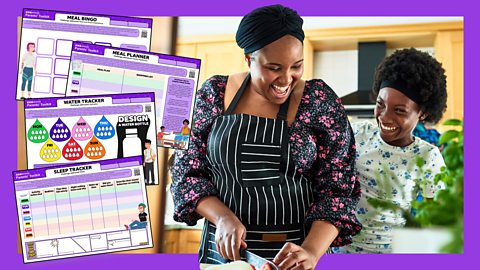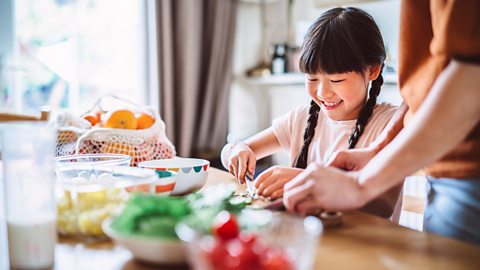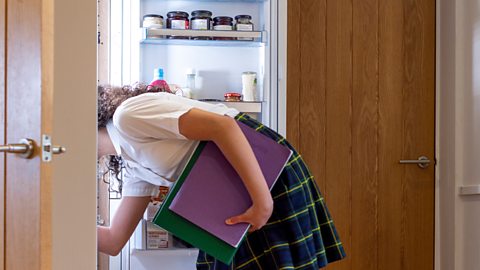Some autistic children can be sensitive to the texture, tastes and smells of food. Although current research is based on small sample numbers, approximately two thirds of autistic children may have feeding difficulties, including things like sensitivity to food and challenges at mealtimes, compared to children with other conditions, and their neurotypical peers.
But this doesnÔÇÖt mean you canÔÇÖt enjoy learning about food with your child, understanding their needs and preferences, and hopefully enjoying mealtimes together as a family.
WhatÔÇÖs the link between autism and food refusal?
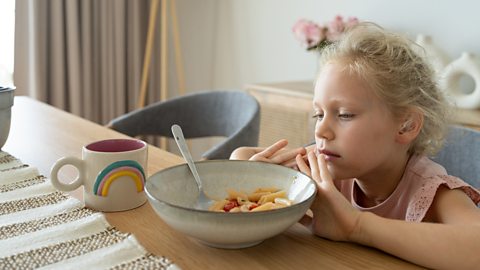
You may find some autistic children prefer to only eat certain foods they deem ÔÇÿsafeÔÇÖ, or theyÔÇÖll display a preference for ÔÇÿbeigeÔÇÖ foods with minimal colour or texture.
The National Autistic Society says: ÔÇ£Autistic children can experienceÔÇ»sensory differences, such as being over- or under-sensitive to sights, sounds, smells, tastes and textures. This can affect their diet and causeÔÇ»anxietyÔÇ»around food, for example some autistic children might only eat certain plain foods or avoid other foods due to the texture.ÔÇØ
Many autistic children rely on routine and predictabilityÔÇ»to manage anxiety about change, andÔÇ»this could explain a preference for certain types of food. The way that food is presented or positioned on the plate, or the food's packaging, can also have an impact. There could also be social and environmental considerations, for example some children might prefer eating with their family while others might prefer eating alone, and some children would rather eat in a quiet room than a noisy and busy space.ÔÇØ
A need for sameness could also explain an autistic child's preference for processed foods: ÔÇ£Processed foods are predictable, designed to look and taste the same each time. In contrast, there will always be natural variation in fresh food.ÔÇØ
Christine McGuinness talks about her eating experiences as an autistic individual, as well as supporting her children.

What is ARFID?
ARFID stands for Avoidant Restrictive Food Intake Disorder. People with ARFID will often avoid certain foods or whole food groups and therefore have a restricted intake. The condition occurs in children, teenagers and adults, and can, but doesnÔÇÖt always, lead to weight loss or a low weight. Children with ARFID may restrict food for several reasons:
- The smell, taste or texture.
- Because they donÔÇÖt feel hungry or arenÔÇÖt interested in eating.
- Because of a previous negative experience like choking or vomiting.
ARFID is not ÔÇÿfussyÔÇÖ or picky eating.
According to the National Autistic Society: ÔÇ£the ARFID pattern of eating is common in autistic people and that sensory sensitivity is likely to be one of the underlying causes.ÔÇØ
If youÔÇÖre concerned your child may have ARFID, contact your GP or charity ARFID Awareness UK. There is also information on the BEAT website. Find advice on spotting some of the signs of an eating disorder.
Support is also available here: ┤¾¤¾┤½├¢ Action line ÔÇô Information and support: Eating disorders
What is pica?
Autistic children can experience pica, which is when someone puts in their mouth or eats non-edible items like stones, dirt, paper, cloth and sometimes faeces. According to the National Autistic Society, some of the reasons an autistic person may experience pica include ÔÇ£not understanding which items are edible and inedible; seeking out the sensory texture or the taste of an item; relieving anxiety, stress, pain or discomfort; seeking attention; avoiding a demand or displaying a symptom of iron deficiency.ÔÇØ
Speak to your childÔÇÖs GP and dentist to rule out any medical issues, and then seek support for your child from their doctor or appropriate charity.
How can I help my autistic child enjoy food and family mealtimes?
One of the most important things to remember is to try and keep calm and avoid making mealtimes and eating stressful for you and your child.
Video: Some families tried out our pack of resources ÔÇô they share their experiences here:
Danilo: "Having autism, he has a special educational needs, special support with his life."
Andrew: "From our perspective, the main difficulty is the language barrier and the sort of levels of understanding."
Danilo: "School is harder for him than for probably other children. So my son requires to be like, properly rested. If he's not rested enough, he's usually more grumpy. It means that he really loses the focus a lot. And another thing is probably because my son is not very verbal, I mean, sometimes you miss some of his needs because he doesn't tell you."
Andrew: "Each kid has their own needs. The reason why we found this pack helpful is because there are lots of different activities and a lot of different methods. So you could find ones which worked well for you and for your family."
Danilo: "As soon as we saw there was an activity related to his sleeping tracking, I mean we, that's the first thing that I did."
Andrew: "With her and down syndrome, she's not as active as other kids. Quite a few years ago, she put on huge amount of weight. We've done a lot of food diaries before. When you finish it all and you look back, you can look at areas that you can sort of change. Slowly and surely you know, the weight is starting to come off, so that's a good thing. And I say that the activities that we've been introduced to have helped us through that."
Danilo: "Because of having a son with special education needs, I mean, we have been through the journey of getting like occupational therapists, speech therapists, and support in the school and teachers. So some of the information that we have received from the pack are things that we already were aware. The main benefit in our case is that, I mean, you get, the chance of like refocusing yourself for a few weeks."
Andrew: "I felt like I had already known some of this, some of the information that was in the pack. Because you know, we've been to various parent groups and we've been through weight management, through our local special needs team. So I guess I kind of thought, what are they gonna be able to teach me out of this pack? You know, I've been told all this before, but there is a lot of new things. Even though you think you know it all, you don't."
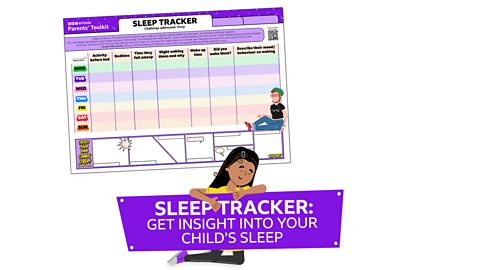
There are lots of different activities and methods, so you could find ones which worked well for you and your family. ÔÇô Andrew, dad of CJ
We asked the dads of Daniel, who is autistic, and CJ, who has DownÔÇÖs syndrome, to try out some of our food and sleep activities to see which helped their family to enjoy food together, and eat a more balanced diet.
DanielÔÇÖs dad, Danilo found using a sleep tracker to follow his sonÔÇÖs sleep patterns really helpful for monitoring his mood, and subsequently his appetite. If youÔÇÖre ready to give it a go, try downloading our free to monitor how much sleep your child is getting over a one-week period.
CJÔÇÖs dad, Andrew found keeping a useful for helping his daughter to make some different food choices.
Read more on how sleep affects food and mood.

7 tips for helping your child to feel more relaxed about mealtimes
These tips are more focused on those children who donÔÇÖt have a diagnosed physical barrier to eating food:
- Keep a note or food diary of what your child eats and when, to try and identify any patterns in their eating difficulties.
- Notice if theyÔÇÖre overwhelmed by the amount of food, the range of food on the plate, or the food groups youÔÇÖre feeding them. Then you can make adjustments like smaller portion sizes, or separating foods on the plate.
- Observe whether they tend to over eat or eat small amounts at mealtimes, and make adjustments accordingly. Serve smaller meal sizes if theyÔÇÖre over-eating or provide more regular meals and snacks if they can only manage small amounts in one go.
- Reduce sensory overload if relevant. Minimise distractions like loud noises, strong smells, or bright lights. A calm, quiet environment can help children focus on eating. Think about any sensory differences your child has and how you can account for them. Some children may eat better if they are distracted such as using a tablet.
- Provide clear visual information to help your child express and recognise their needs, feelings and preferences. You can use happy or sad face pictures for them to show if they like a particular food or not, and write out daily or weekly menus of meals and snacks for them to view ÔÇô as predictability can help reduce mealtime anxiety.
- Harness any special interests your child has by, for example, using their favourite TV characterÔÇÖs plate and cutlery, or exploring foods from their favourite singer or sports teamsÔÇÖ country or region.
- Speak to your childÔÇÖs GP, occupational therapist or Speech and Language Therapist if they have any physical issues preventing them from eating particular foods.
Read 15 tips to introduce new foods gradually to your child.
How can I cook together with my autistic child?
Try out our by asking your child to write down or point to pictures of foods they like, divided into food groups. Add these to the Favourite Foods resource, then use the Meal Planner with your child, to plan meals for the week, incorporating some of those foods. If your child then feels comfortable with it, you can pick a meal from the meal plan and prepare it together. This gives the child the potential opportunity to try out new foods in a non-pressured environment.
DanielÔÇÖs dad found that cooking together with his son helped him get used to being around new foods, looking at them and touching them if he felt comfortable. He also found following recipes together to be educational.

How can I eat together with my autistic child?
YouÔÇÖll need to be led by your child as to how they prefer to eat, but as DanielÔÇÖs dad says, some children can benefit socially from eating together at the dinner table.
The National Autistic Society says: ÔÇ£Some people eat better in the company of their family or peers. They may be more willing to try new foods if they see other peopleÔÇ»trying the same food and enjoying it.ÔÇØ
ÔÇ£However, for other autistic people, eating alongside other people can be extremely challenging, and the sensory overwhelm and the social nature of mealtimes can be very stressful.ÔÇØ Eating away from other people could make the person more relaxed, and able to eat more volume or variety.
If a meal is not going to be at home, but in a restaurant, at a friends' home or somewhere unfamiliar - depending on the child's age - you can prepare them in advance by telling them where they are going, who will be there, who they will be sitting with or next to, what people might talk about, and what they could say to start a conversation. If your child is going to be eating at school itÔÇÖs worth speaking to their teacher about the best strategies for lunch times.
The National Autistic Society advises: ÔÇ£Attention to detail, and difficulty with change, is characteristic of autistic people.ÔÇ»The way the food is presented or positioned on the plate, or the food's packaging, may dictate whether it is eaten or not.
To ensure as smooth a meal time as possible, think about:
- Where does your child usually sit and what cutlery do they normally use?
- Is the food over- or undercooked?
- Has the food been cut in the same way as normal?
- Has the positioning of the food on the plate been altered?
- Are there 'bits' on the food?
- Has the packaging changed?
- Is the box damaged?
- Have you bought a different brand?
Listen to the link between eating disorders and autism from All in the Mind podcast series on ┤¾¤¾┤½├¢ Sounds.

Parents' Toolkit
Fun activities, real-life stories, wellbeing support and loads of helpful advice - we're here for you and your child.

Happy Family Eating... a fun guide for parents
An overview of our detailed resources and guides to helping your child enjoy and understand their food
